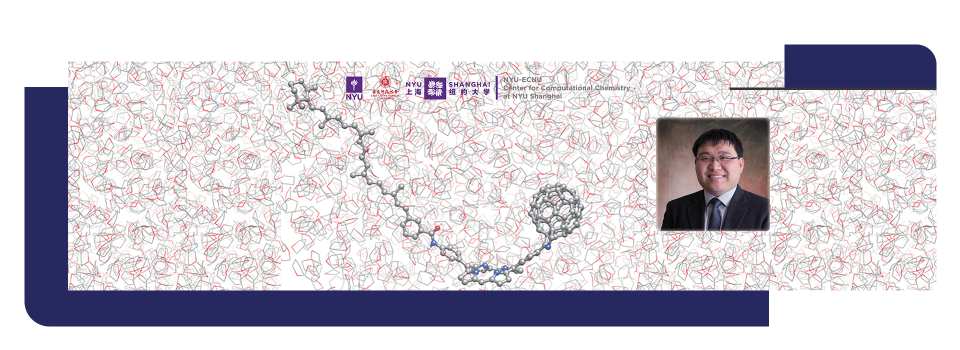Sep 21 2018
Published by
NYU Shanghai

Xiang Sun, who recently joined NYU Shanghai as an assistant professor of chemistry and a member of the NYU-ECNU Center for Computational Chemistry at NYU Shanghai, has developed a series of computational methods to understand the charge transfer dynamics of complex organic photovoltaic molecules in the condensed phase. This may have implications for next-generation solar cell technology.
The new method, which was published in the recent issue of The Journal of Physical Chemistry C., combines quantum mechanics and novel approaches of molecular dynamics simulation. Using this new tool, researchers are now able to explore the charge transfer dynamics of very large molecular systems, while still able to account for important quantum dynamical effects like the tunneling effect. A particular application is to study the efficiency of charge separation after absorbing sunlight in photovoltaic molecules dissolved in an organic solvent, containing as many as about 88,000 atoms. This may hold the secret for the molecular mechanisms in next-generation solar cells.
Sun completed this research during a postdoctoral fellowship with Eitan Geva at the University of Michigan, Ann Arbor, in collaboration with Barry Dunietz at Kent State University, and Margaret Cheung at the University of Houston.
Sun has produced original work in the forefront of theoretical and computational chemistry in areas such as statistical mechanics, ultrafast nonlinear spectroscopy, and quantum dynamics. He expects to develop new methods at NYU Shanghai. “Chemical dynamics in the condensed phase is quite fascinating. I am looking forward to embarking a new page of my career at NYU Shanghai continuing the research of various topics in chemical dynamics,” says Sun.
Journal Reference:
Xiang Sun, Pengzhi Zhang, Yifan Lai, Kyle L. Williams, Margaret S. Cheung, Barry D. Dunitz, Eitan Geva, Computational Study of Charge-Transfer Dynamics in the Carotenoid–Porphyrin–C60 Molecular Triad Solvated in Explicit Tetrahydrofuran and Its Spectroscopic Signature, J. Phys. Chem. C 122, 11288-11299 (2018).


